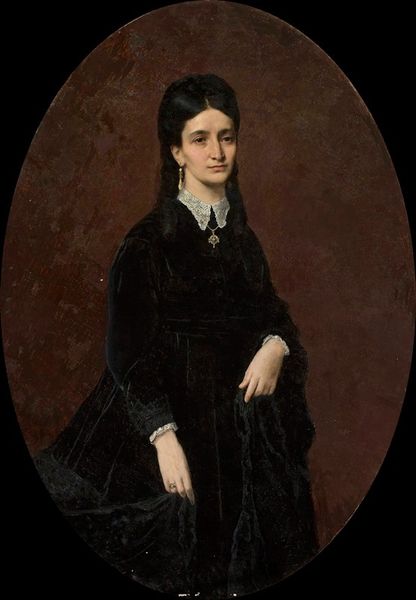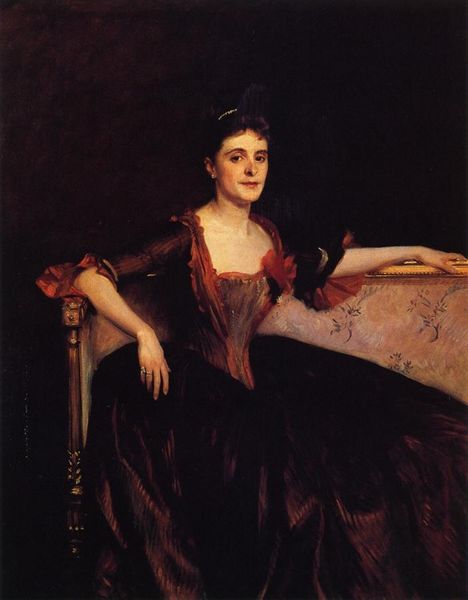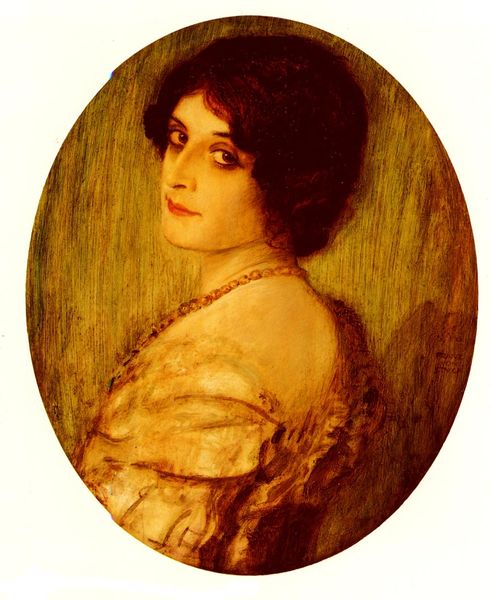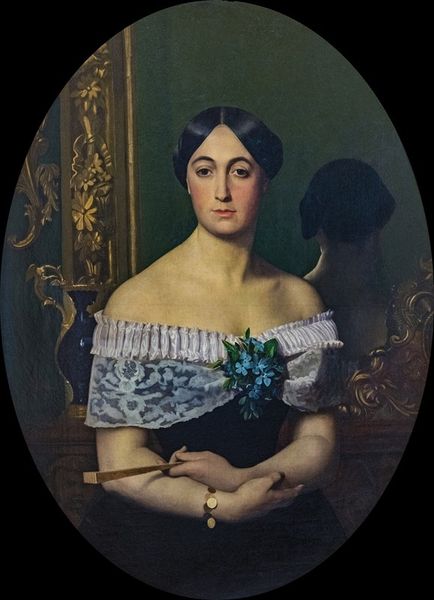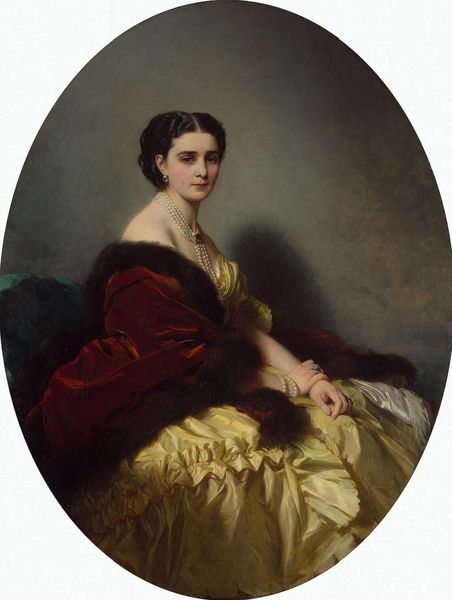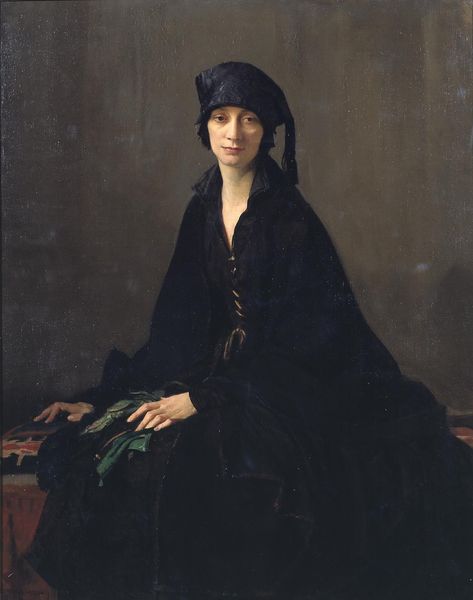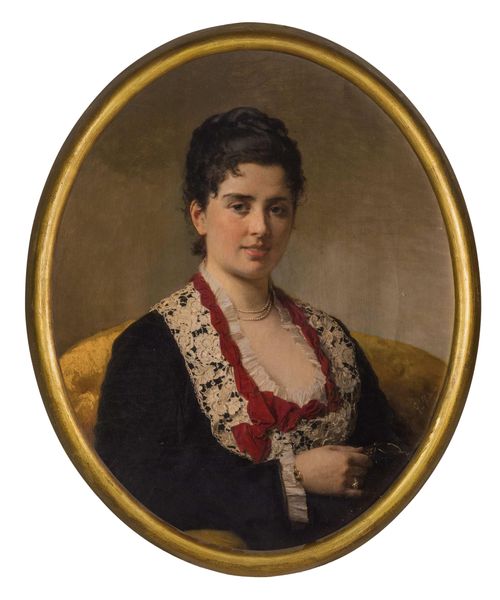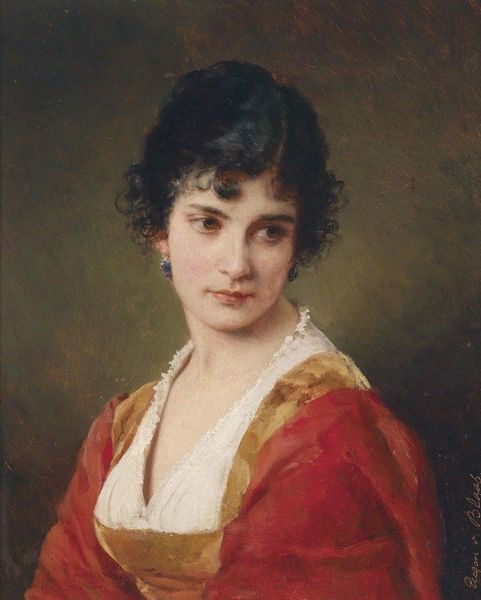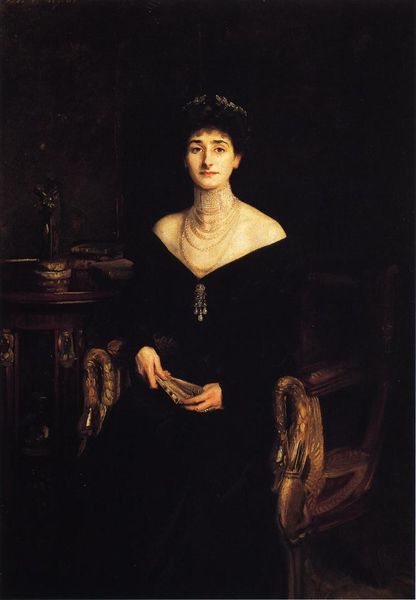
Dimensions: 115 x 93.5 cm
Copyright: Public domain
Curator: Standing before us is Francesco Hayez's 1872 portrait of Antonietta Negroni Prati Morosini, currently residing here in Milan's Galleria d'Arte Moderna. He captures her in oil paint. Quite arresting, isn't it? Editor: Absolutely. My first impression is…melancholy. Despite the luxurious surroundings, the delicate lace, there’s a profound sense of something unspoken in her eyes. It's that shadowed gaze. Curator: It’s tempting to read that melancholy through a cultural lens. Italian Romanticism often grappled with themes of national identity and… well, loss. Editor: Loss indeed, look at how she delicately holds those roses; they are barely pink and suggest the loss of youth. What is being gained and lost is interesting and layered. Those visual markers can lead down several paths, including marriage. Curator: Good observation! And her dress, that gorgeous blue satin, feels almost restrictive, like it's subtly containing her. Hayez uses realism but still infuses it with emotion, it is more of capturing the 'essence' than simply mirroring her physical traits. What are you perceiving about that realism? Editor: Well, he definitely romanticizes her—there's a clear effort to ennoble and beautify her; the loose brushwork is soft, and nothing is ever really unflattering to look at. Yet that direct gaze disrupts any easy interpretation. It's confident, intelligent... a little challenging, and as you were saying about melancholy, I feel some stoicism there. Curator: The subdued palette enhances the quiet intensity. It feels very intimate, less like a grand commissioned portrait and more like a study of a complex soul. A cultural artifact, and maybe even an act of friendship, of revealing the truth that is always a little bit buried, what do you think? Editor: Agreed. You know, symbols are very important when interpreting portraiture. The chair she’s sitting on—that ornately gilded throne. Is that truly her and does she really "sit there"? In that seat. That kind of grandiosity serves almost as a mask and as you just observed with her melancholy the artist captures the emotional life beneath the surface. Curator: Well said. Hayez provides an invaluable glimpse into Italian society during this period but this also showcases how a portrait could go beyond mere likeness, and venture into capturing the nuances of the human experience. I see an icon for female complexity. Editor: And so even today, with a contemporary eye, this 'lady' still seems full of contradictions: sadness mixed with steel, luxury intertwined with vulnerability. It really prompts a powerful meditation, an ongoing mystery.
Comments
No comments
Be the first to comment and join the conversation on the ultimate creative platform.
